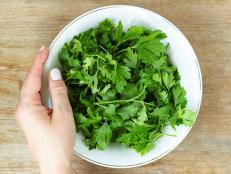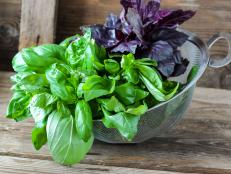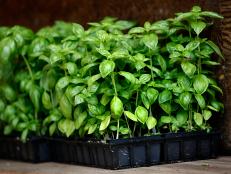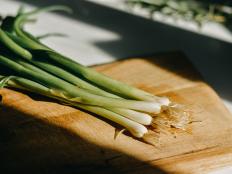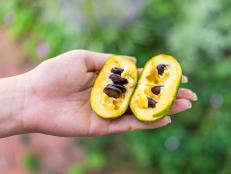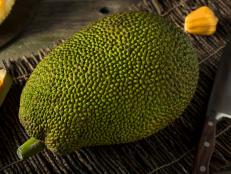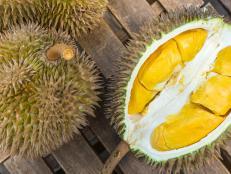What Is a Sprig of Thyme?
Recipes call for sprigs of herbs all the time. But what, precisely are they?

Renee Comet
By Layla Khoury-Hanold for Food Network Kitchen
Layla Khoury-Hanold is a contributor at Food Network.
Fresh herbs can really make a dish sing, but some are more straightforward than others to cook with. Maybe you’ve seen a recipe call for a sprig of thyme (or another type of herb) and wondered how large it should be, or how much you should use. Here we dive into what a sprig is, plus how to buy, store and cook with fresh thyme.
What Is a Sprig?
A sprig is a branch of an herb plant. Sprigs of herbs typically range from 2 to 4 inches long, though some varietals can measure up to 6 inches.
What Kinds of Herbs Are Measured In Sprigs
Herbs that are measured in sprigs include:
-
Basil: typically comprised of a 3 to 4 leaf cluster at the top of the stem
-
Rosemary, tarragon and thyme: typically around 3 around 4 inches long
-
Mint: 2 to 3 leaves attached together
-
Parsley: ranges from one leaf to a cluster of leaves

Renee Comet
What Is a Sprig of Thyme?
A sprig of thyme is a hardy herb that is comprised of a woody stem (the stem is edible but most often discarded after cooking) and small green leaves. Thyme has a subtle earthy flavor with grassy undertones and hints of mint and lemon. Look for sprigs that are 3 to 4 inches long with a few offshoot branches from the main stem. A single stem likely won’t have enough leaves to satisfy the recipe, and stems with more 10 or more offshoots will have too many. So, if you look at the photo above, the thyme in the center is the perfect size. Generally, a 4-inch sprig of thyme will yield between 1/4 and 3/4 teaspoon of leaves.
How Much Dried Thyme Equals a Sprig?
If you don’t have access to a sprig of thyme, a good rule of thumb is to substitute 1/2 teaspoon of dried thyme for 1 teaspoon of fresh thyme leaves.
How to Buy and Store Fresh Thyme
At the grocery store, fresh thyme is typically sold in small plastic clamshell containers in groups of sprigs or at markets, where sprigs of thyme are sold by the bunch.
Store fresh thyme in the refrigerator in the original clamshell or wrap bunches of thyme in damp paper towels, loosely covered in a plastic bag. Stored this way, thyme will stay fresh and maintain its flavor for a week or so. Keep an eye on it—if the leaves start to tinge brown, its best to use it up.
If you don’t have plans to cook with it, fresh thyme is hardy enough to be stored in the freezer. Freeze whole sprigs by washing and thoroughly drying before putting them in resealable, freezer-safe bags (be sure to remove as much air as possible). Alternatively, you can freeze the leaves in portions: wash and dry the sprigs, strip the leaves off the stem, place teaspoonfuls of the leaves in ice cube trays, then add water to cover and freeze. Once the cubes have frozen, transfer them to a resealable plastic bag (be sure to label the date and contents). You can add the frozen thyme cubes to bolster soups, stews and braises.
Finally, you can also air-dry fresh thyme by washing the sprigs and laying them out to dry in a single layer on a paper towel. Once the leaves are crisp to the touch, strip them from their stems and bottle them up in a small container like a leftover spice jar.

Teri Lyn Fisher
How to Cook with Fresh Thyme
If a recipe calls for a whole sprig of thyme, it will typically indicate that the sprig should be added whole to the pot. This is the case for making herb bundles to infuse cooking liquids, like the thyme-scented heavy cream in this Potato Gratin with Spring Onions or for stews and soups, as with this Herb Chicken Soup with Spring Vegetables. Individual sprigs are often added to braises, like these Beer-Braised Country-Style Pork Ribs, or slow-simmering dishes, like Mushroom and Spring Vegetable Risotto (pictured above).
If a recipe calls for fresh thyme, it will usually specify whether you need to leave the sprig intact or take the thyme leaves off the stem. To remove the leaves from a sprig of thyme, hold the sprig at the top in one hand, and with the other hand, pinch at the top and run your fingers down the stem to strip the leaves off as you go. Fresh thyme pairs well with vegetables, chicken, fish, stews, pasta dishes and beans. Three of our favorite uses for fresh thyme are these herb-flecked Saucey Mushrooms, which are an excellent match for flank steak, the herb medley that makes this Oven-Fried Ranch Chicken pop, and this hearty-yet-bright Pasta, Kale and White Bean Soup.
Related Links:
























